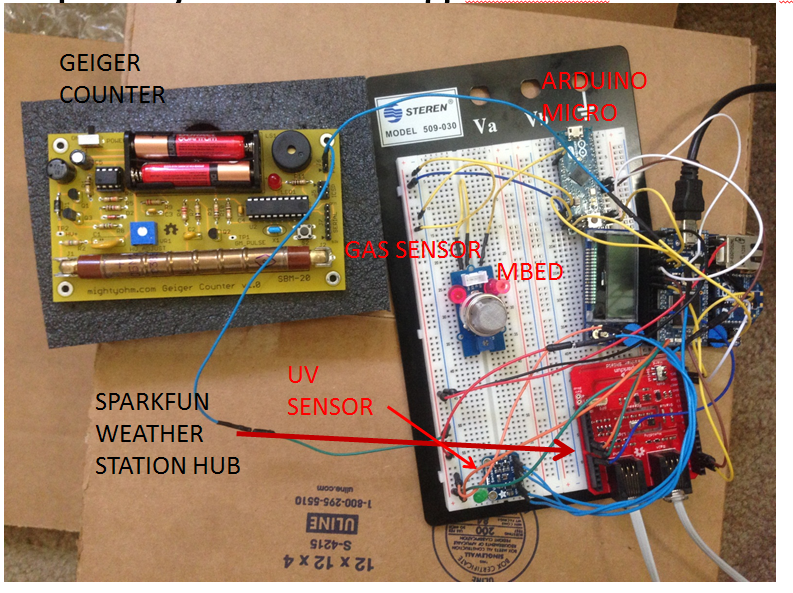Important changes to repositories hosted on mbed.com
Mbed hosted mercurial repositories are deprecated and are due to be permanently deleted in July 2026.
To keep a copy of this software download the repository Zip archive or clone locally using Mercurial.
It is also possible to export all your personal repositories from the account settings page.
Fork of WeatherMeters by
Natural Calamities Monitoring System
/media/uploads/sunilaluri6/natural_calamities_monitoring_system.pptx /media/uploads/sunilaluri6/natural_calamities_monitoring_system.pptx 
NATURAL CALAMITIES MONITOR AND ALERT SYSTEM: Motive: It is becoming a big issue to warn people, way ahead of time, about the disaster that is approaching them. Most of the cases like tornadoes, flash floods, and people have very less time to react and cannot wait for some national or regional news channel to alert them. So, developing a home based system, which can do all these monitoring locally and publish the data to nearby homes (as well as local authorities), saves lot of lives and property damage. Primary Functions: 1.) Monitor the home surroundings for any irregularities in the atmosphere parameters. 2.) Provide an early warning of natural calamities, disasters and their proximity. 3.) Aggregate and analyze data from previous readings and predict the possible disasters. 4.) Send the collected data periodically to the local Gov. Agencies, as well as nearby homes. 5.) Talk to the weather channels and provide local alert if not triggered already. 6.) Send texts, email alerts to all the persons living in the home, depending on their availability. 7.) Data can be used to steady weather patterns more precisely and accurately.
Sensors Used:
1.) Flood or Tsunami monitor – water sensor
2.) Rain monitor electronic rain gauge
3.) Earthquake monitor – motion sensor, piezo electric sensor, opto coupler, seismograph.
4.) Wind monitor – ultrasonic anemometer, traditional wind sensors.
5.) Fire monitor heat sensor
6.) Smoke monitor – CO, CO2, Natural Gas sensors
7.) Temperature monitor – heat sensor
8.) Light monitor –UV – photo sensor, UV sensor (ML8511)
9.) Gamma radiation – Geiger counter.
10.) Bomb blasts or gas pipe line blasts – Shock wave and sound sensors.
On the top of all, internet is used to collect more data of, nearby, local and national scenarios.
Wireless Protocol for Sensors:
Zigbee – low energy consumption and effective for short range.
Central Processing Unit: 1.) Collects data from Zigbee network, preprocesses and transmits it through Wi-Fi (or Cellular Data) to local agencies. 2.) Triggers corresponding alerts and warnings. 3.) Predicts the next possible event, based on the past data. 4.) Warns, if any sensor malfunctioned or is low on power resources.
Power Source for Sensors: Primary: Solar Auxiliary: Lithium Ion battery. Low or Critical Power Action: Sends alert to CPU. CPU has the same power sources or can use the utility power.
Estimated Cost of the system: $300-$500 (Might go down, based on the demand).
Architecture:

